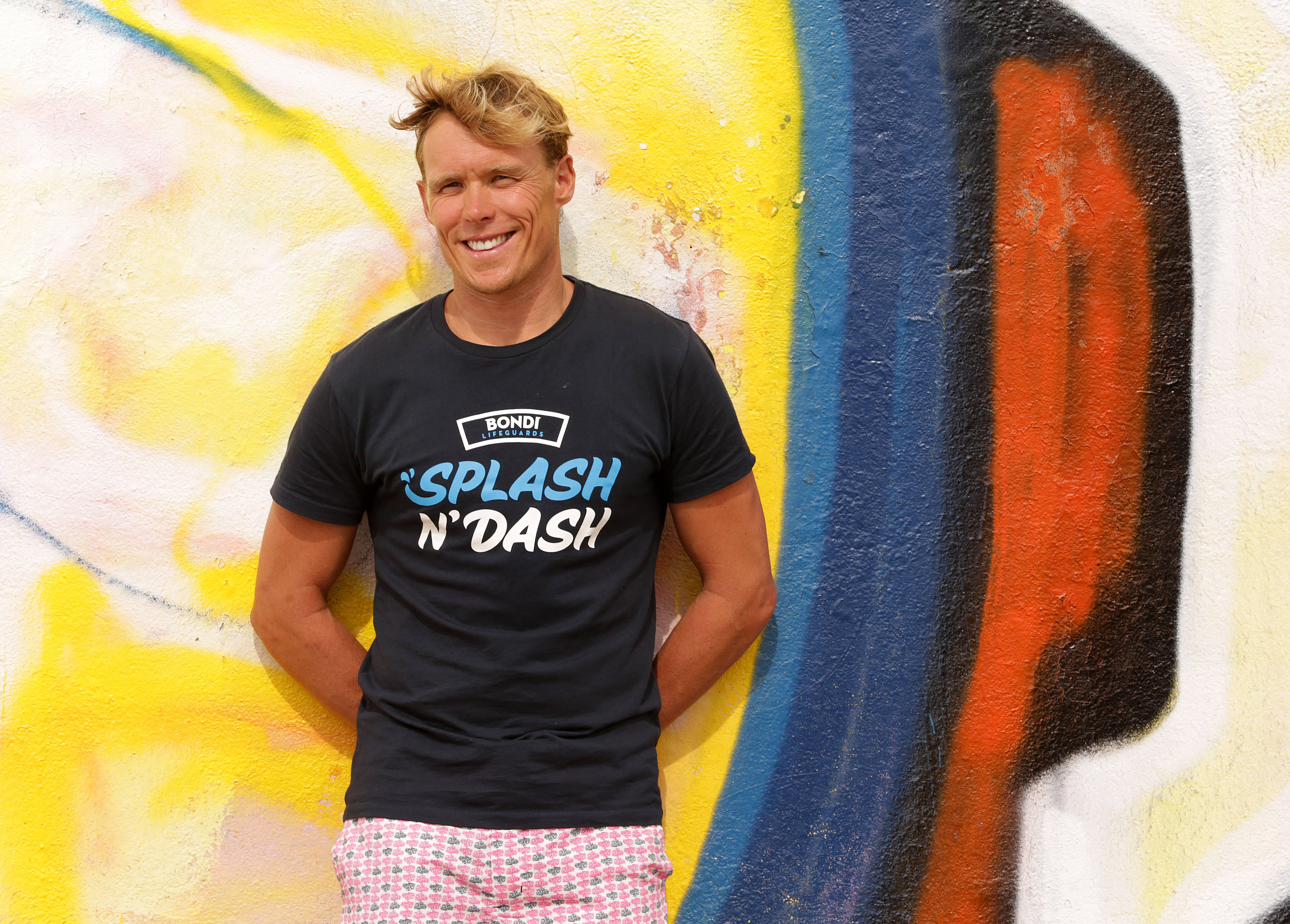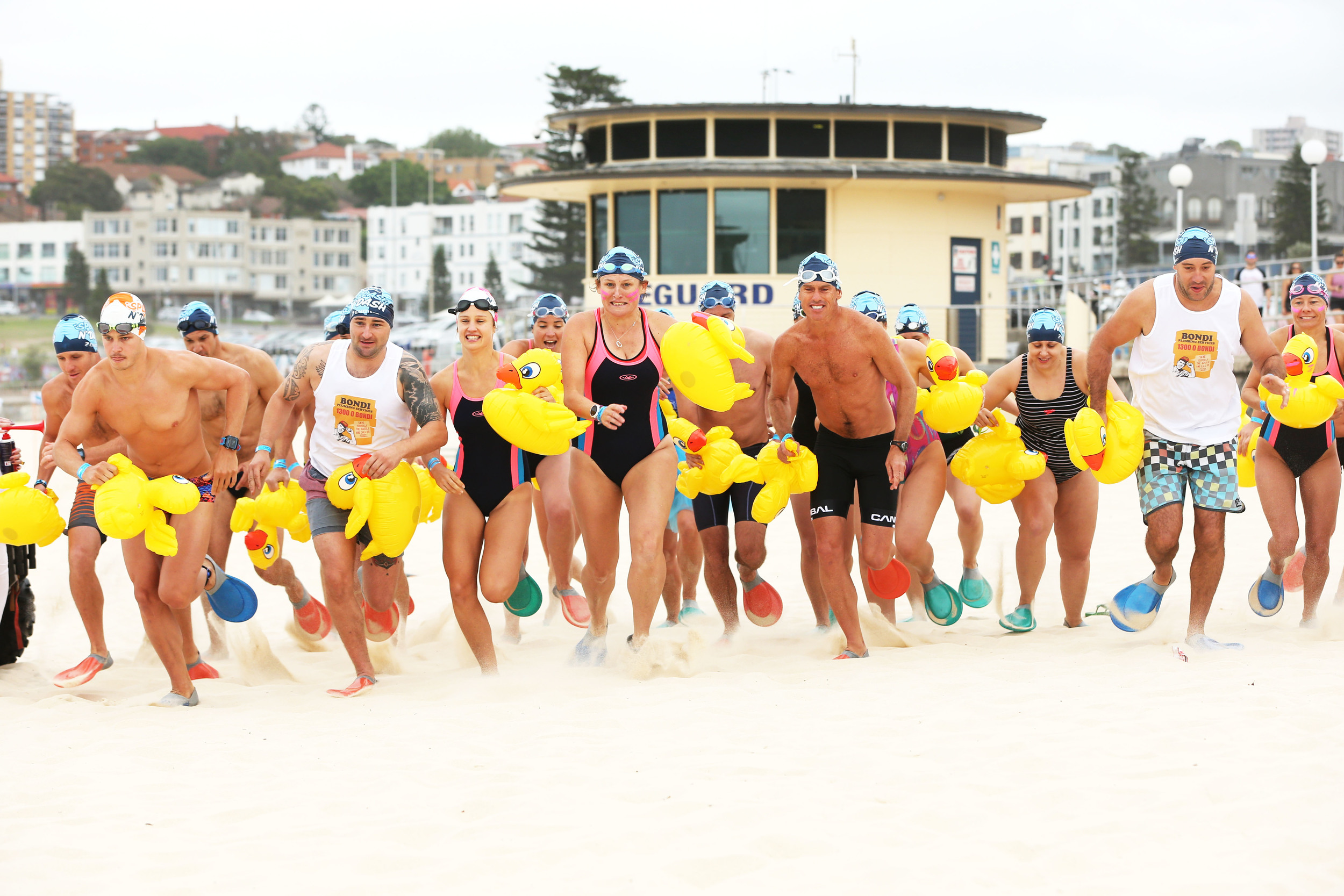Bondi Rescue's "Reidy" shares how to survive your first Open Water Swim!

Andrew ‘Reidy’ Reid is best known for saving lives on the hit TV series Bondi Rescue, but beyond his TV personality and athletic prowess he is also an inspiring and determined entrepreneur and charity ambassador. It was in this capacity that we got to know Reidy, as a one man production band for the Splash Series, we have witnessed first hand his determination, business skills and professionalism.
The series back-story is close to the heart and fuelled by Reidy’s own personal torture of being bullied and body shamed at school. This childhood agony led Reidy to discover exercise; his passion for running and swimming - and frankly he has never looked back!
The Splash Series events aim to inspire and motivate others to do the same and gives back to several charities including WAYS (Waverley Action for Youth Services) – an organisation that accepts people of all shapes, colours and sizes. Register Now caught up with Reidy, to chat all things Ocean Swims and his thoughts on our most burning questions for newcomers to the sport!
First of all Reidy, before we get into the main Q&A what are the most important things to know about swimming out in the open water?
As a lifeguard I have worked water safety for some of the biggest ocean swims in Australia. It’s really important to know your ability, just because you can swim 1km in the pool doesn’t mean you can swim the same in the surf.
I can’t stress enough that you really need to check the beach conditions on the day of the event - they are always changing, make sure you take the routes in and out of the surf that will benefit you best.
In races with quite a lot of chop I've seen between 50-100 people pulled out and get rescued before the first buoy - if you don’t want to be one of those stats check the conditions!
To avoid swimming 100m off track, losing precious time and energy, make sure you know the course; check the maps and look for the buoys, count them twice and then again a third time.
Alright so I am all set for my first event, seems a silly question but what should I wear?!
I’m not against wearing wetsuits/wetsuit shorts especially for a first time competitor - it offers a little bit of flotation which can provide you with bit more confidence. But, if you are going for a prize you may not be eligible for one if you are wearing a wetsuit. I also wouldn't recommend wearing a full body wetsuit in hot weather, it can be really uncomfortable.
Can I wear my pool goggles?
Yeah look I’m not against it, I’m not a goggle kind of sir myself! Unless they are the proper swimming goggles that James Magnussen wears, I dare say you can wear pretty much whatever you want. As long as they fit and don’t leak.
Although I’ll give you a tip - if you don’t wear goggles for a 2km swim your eyes will be glowing like Krispy Kreme Doughnuts!
I’ve got serious pre-swim jitters how do I warm up and keep it together at the same time?
Jump in the water! Swim for 200m -300m nice and easy, then start a warm up - build in speed 25 or 50m efforts swim at 60% then 70% then 80% then 90% so your muscles are ready for what is about to happen in the race. Arm swings: rotate shoulders and arms swing nice and easy start off slow.
Best way to stay calm - don’t overthink it if you have a race plan, try not to worry about what everyone else is doing and just focus on yourself.
Righto, now I’m in the water, what’s the best strategy to avoid being swum over the top of and where the heck should I swim in the pack?
In the ocean your stroke will always be more of short and choppy one to compensate for the bumpy conditions. You will also be better off only breathing to one side.
Forget bilateral breathing, that’s best left for the pool!
A common mistake people make is following the leader, don’t go out with the pack. 90% of people who do an ocean swim go out way too fast, if you follow them out you will blow up and finish slower than you started.
The key to doing an ocean swim is to make sure the back end of your swim is faster than your first half. If it is your first ocean swim don’t go out as hard as everyone else - sit to the back of the pack and let everyone else go ahead so that you have nice clear water to swim through.
Obviously this rule does not apply to people that have done lots of ocean swims and they want to jump on people's feet and take drag!
Any key strategies for getting out through the surf break?
TRAIN IN IT! Go find a surf swimming group and get training! Don't just turn up and plan on getting in and out of the surf based on sheer luck, find a surf swim group like Bondi Fit or CanToo, there are plenty of surf groups that coach surf swimming.
Once you get to the impact zone and you dive under the wave, hold the sand and look up - when you want to come up give it an extra 2 seconds. 9 times out of 10 people will panic and come up too quickly the wave will then push them back and they will lose ground.
If you follow my strategy the wave will go over you completely, you won’t get pushed back and you will be that little bit further in front of everyone else!
How do I deal with that person that just tried to swim over the top of me and OMG I’m approaching a buoy, what do I do?!
To deal with someone aggressively swimming over the top of you just throw your elbows - you’re in the water you need to defend yourself as best you can! Elbows usually sort people out pretty quickly.
If someone is physically trying to drown you report them to the police! But look no one is physically going to try drown you, if they are swimming over the top of you and you’re concerned just move to the left or right.
First thing you need to know when looking for the buoy is that there is a certain style of swimming for this, if you go and learn how to surf swim with a professional coach, the technique is called looking and lifting.
Jump over to YouTube to watch how Ky Hurst absolutely nails it - he’s easily Australia's and the world's best ever surf swimmer. He will take 3 or 4 strokes lift himself up out of the water and look for the buoy to make sure he is swimming in the most direct route.
If you can’t see anything and don’t know where you are going you better start breastroking and working out where you are before you veer 100 metres off course! Once you know where you are going and have a direct line of sight with the buoy then go back to the lifting and looking technique.
When you arrive at the buoy just take the shortest route around it, swimming buoys in ocean swims are brutal and something you just need to get use to. If you are really concerned about it, slow down let everyone else go and then go around when you are on your own. Once you become a season campaigner put the biff in as you go around, that's what happens - people will do it to you so do it back to them!
How to manage getting psyched out - was that a flippin' shark I just saw?!
If you are having a freak out mid swim, roll on your back, lay there and float. Then take 3 nice big deep breaths and remember how beautiful it is to be out in the ocean and to be nice and free.
If you are really concerned most swims, especially mine, have loads of water safety out there - just raise your arm to call for help. If there is no one else around to help you, just grab another swimmer and say “can you please help me” most people will abandon their race to help a follow swimmer.
Most importanly don't ever forget that everyone can float!



